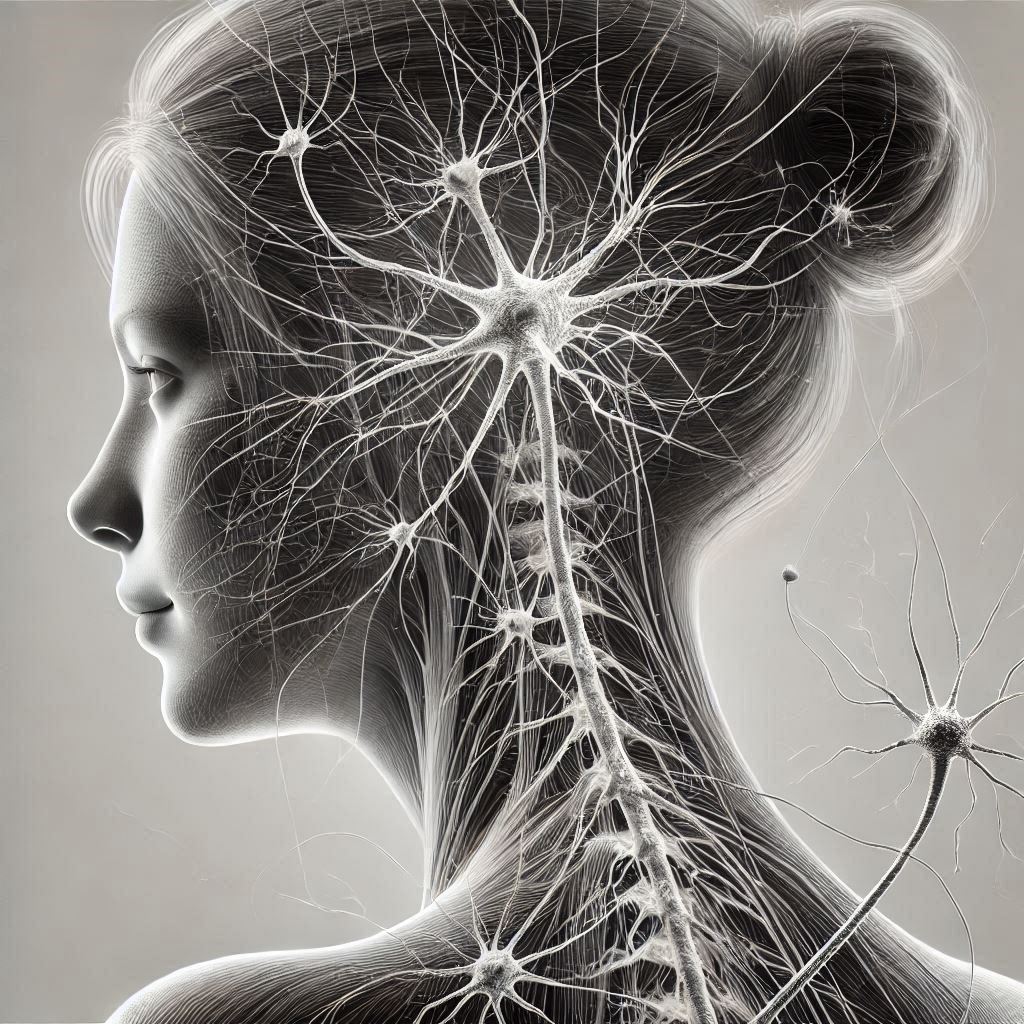Understanding what is considered ‘normal’ for panic attack frequency is vital for both sufferers and their support systems. Whereas some may endure them sporadically, others might experience them more regularly. This discrepancy can lead to confusion and concern. In exploring the frequency of panic attacks, this blog post aims to clarify what can be expected and offer reassurance, helping you navigate this challenging journey with greater confidence and understanding.
Understanding Panic Attacks
Panic attacks are intense episodes of sudden fear or anxiety that often peak within minutes. These experiences can be incredibly distressing and overwhelming for individuals who go through them. Understanding panic attacks is crucial in recognizing and managing these challenging occurrences.
Definition of Panic Attacks
A panic attack is a sudden onset of intense fear or discomfort that reaches a peak within minutes. During a panic attack, individuals often experience overwhelming physical and emotional symptoms. These attacks are typically unexpected and can occur even during calm states, making them highly unpredictable and distressing. Worth noting is that a person having a panic attack might feel as if they are experiencing a heart attack or losing control completely.
Symptoms of Panic Attacks
Panic attacks manifest in various forms, impacting the body, emotions, and thoughts. Understanding these symptoms can help in identifying and managing panic attacks effectively.
- Physical Symptoms:
- Heart Palpitations: Rapid or pounding heartbeat.
- Sweating: Excessive sweating, sometimes cold sweats.
- Trembling or Shaking: Involuntary shaking or twitching.
- Shortness of Breath: Feeling like you can’t catch your breath or choking.
- Chest Pain: Sharp or constricting pain in the chest.
- Nausea: Feeling sick to your stomach.
- Dizziness: Feeling lightheaded or faint.
- Emotional Symptoms:
- Intense Fear: Overwhelming sense of terror or impending doom.
- Dread: Fear of losing control or going crazy.
- Detachment: Feeling detached from reality or oneself.
- Cognitive Symptoms:
- Racing Thoughts: Rapid and uncontrollable thoughts.
- Catastrophic Thinking: Assuming the worst possible outcome.
- Confusion: Trouble focusing or thinking clearly.
Impact of Panic Attacks on Daily Life
Panic attacks can significantly disrupt an individual’s daily routine and overall quality of life. Here are some ways they can affect everyday activities:
- Work: Frequent panic attacks can hinder job performance, attendance, and career progression due to the inability to focus or the need for frequent breaks.
- Relationships: Panic attacks can strain personal relationships, making social interactions stressful. Friends and family may struggle to understand or support someone regularly experiencing panic attacks.
- Daily Routine: Simple tasks, such as grocery shopping or attending events, can become daunting due to the fear of having an attack in public places.
- Mental Health: Constant worry about future panic attacks can lead to chronic anxiety, depression, and other mental health issues.
Seeking help from healthcare professionals and utilizing evidence-based coping strategies, such as those provided by the Anxiety and Depression Association of America, is crucial in managing and mitigating the impact of panic attacks on daily life.
Frequency of Panic Attacks
Panic attacks can vary in frequency from person to person, impacting individuals differently based on several factors. Understanding the frequency of panic attacks can provide insight into what is considered normal and help individuals navigate their experiences effectively.
Determining ‘Normal’ Panic Attack Frequency
Healthcare professionals typically consider various criteria to determine what is normal or typical frequency for panic attacks. The criteria include:
- Intensity of Attacks: How severe are the panic attacks?
- Impact on Daily Functioning: Is the person able to continue their daily activities?
- Overall Well-Being: What is the person’s mental and physical health like?
Doctors or therapists often monitor these patterns through discussions and mental health assessments. Having regular check-ins with a healthcare provider can help establish a baseline, making it easier to define what is normal for you. According to the National Institute of Mental Health, understanding the nuances of panic disorder is crucial for effective management.
Factors Affecting Panic Attack Frequency
Several factors can significantly influence how often panic attacks occur, making individual experiences quite varied. Some of these factors include:
- Stress: High levels of stress can trigger more frequent panic attacks.
- Genetics: A family history of anxiety or panic disorders may increase susceptibility.
- Lifestyle: Poor sleep, unhealthy diet, or lack of physical activity can elevate the likelihood of panic attacks.
- Mental Health: Existing conditions like generalized anxiety disorder or PTSD can contribute to frequent panic attacks.
Identifying these factors is the first step toward managing and potentially reducing the frequency of attacks. For instance, if stress is a major trigger, practicing stress management techniques like mindfulness or yoga can be beneficial.
Typical Patterns of Panic Attack Occurrence
While panic attacks can feel random, they often follow certain patterns:
- Triggers: Common triggers include stressful events, phobias, traumatic experiences, or even specific physical sensations like a racing heart.
- Timing: Some individuals may notice they have panic attacks more frequently at certain times of the day or under specific conditions.
Recognizing these patterns can be highly beneficial. If you identify that your attacks often occur when you’re overwhelmed, for example, you can work on stress management techniques to lessen their impact. For more insights into handling panic attacks, visit the Anxiety and Depression Association of America.
Practical Tips for Managing Frequency
Here are a few actionable tips to help manage the frequency of panic attacks:
- Keep a Journal: Note down when attacks happen and any potential triggers.
- Practice Relaxation Techniques: Activities like deep breathing, meditation, or progressive muscle relaxation can help.
- Healthy Lifestyle: A balanced diet, regular exercise, and sufficient sleep contribute to overall well-being, which can reduce the likelihood of panic attacks.
- Seek Professional Help: Therapists can offer tailored strategies and coping mechanisms.
Understanding these aspects can make navigating panic attacks a bit more manageable. With the right tools and support, reducing the frequency and intensity of panic attacks is possible.
Seeking Help for Panic Attacks
Experiencing panic attacks can be distressing and disruptive, but seeking help is a crucial step towards managing them effectively. Knowing when to consult a healthcare professional and exploring treatment options can make a significant difference in your well-being.
When to Consult a Healthcare Professional
Recognizing the signs that it might be time to seek professional advice is essential for getting the support you need. Some indications that you should consider consulting a healthcare provider include:
- Frequency and Intensity: If your panic attacks are becoming more frequent, intense, or are starting to interfere with your daily life, it may be time to seek help.
- Persistent Symptoms: If you experience lingering physical or emotional symptoms between panic attacks, such as persistent anxiety or fear, it’s advisable to consult a professional.
- Impact on Daily Functioning: When panic attacks begin to affect your work, relationships, or daily activities, seeking guidance from a healthcare professional can help in managing these challenges effectively.
It’s essential to remember that reaching out for help is a courageous step towards regaining control and finding relief from the distress of panic attacks.
Treatment Options for Managing Panic Attacks
When it comes to treating panic attacks, a range of options is available to help you navigate and mitigate their impact on your life. Some common treatment options include:
- Therapy: Cognitive-behavioral therapy (CBT) is a widely recognized approach for treating panic attacks. It focuses on identifying and changing negative thought patterns and behaviors that contribute to anxiety. Learn more about CBT for anxiety on the American Psychological Association website.
- Medication: In some cases, healthcare providers may recommend medications such as selective serotonin reuptake inhibitors (SSRIs) or benzodiazepines to manage symptoms of panic attacks.
- Lifestyle Changes: Adopting healthy lifestyle habits, including regular exercise, balanced nutrition, and sufficient sleep, can support overall well-being and reduce the likelihood of panic attacks.
Exploring these treatment options in consultation with a healthcare professional can help you develop a comprehensive approach to managing panic attacks and improving your quality of life.
For more information on seeking professional help for panic attacks, you can visit resources such as the National Alliance on Mental Illness (NAMI).
Remember, reaching out for support is a positive step towards regaining control and building resilience in the face of panic attacks. It’s essential to prioritize your mental health and well-being by seeking the assistance you deserve.
Coping Strategies for Panic Attacks
Living with panic attacks can be challenging, but there are coping strategies that individuals can utilize to manage and reduce the frequency of these distressing episodes. Let’s explore some self-help techniques and lifestyle changes that can make a difference in handling panic attacks effectively.
Self-Help Techniques:
- Deep Breathing Exercises: Practice deep breathing by inhaling slowly through your nose, holding for a few seconds, and exhaling through your mouth. This simple technique can help calm your mind and body during moments of heightened anxiety.
- Grounding Exercises: Focus on your immediate surroundings by naming objects you see, touching different textures, or listening to specific sounds. Grounding exercises can bring your attention back to the present moment and alleviate feelings of panic.
- Progressive Muscle Relaxation: Tense and then release each muscle group in your body, starting from your toes and working your way up to your head. This relaxation technique helps release physical tension and promotes a sense of calm.
- Mindfulness Meditation: Engage in mindfulness practices that encourage you to observe your thoughts and emotions without judgment. Mindfulness meditation can build resilience against panic attacks by fostering a greater awareness of your mental state.
- Positive Self-Talk: Replace negative thoughts with positive affirmations. Remind yourself of your strength and ability to cope with challenging situations. Building a mindset of self-empowerment can help counter panic-inducing thoughts.
Lifestyle Changes to Reduce Panic Attack Frequency:
- Regular Exercise: Engaging in physical activity releases endorphins, which are natural mood elevators. Incorporate regular exercise, such as walking, jogging, or yoga, into your routine to reduce stress and anxiety levels.
- Balanced Diet: Maintain a healthy diet rich in fruits, vegetables, whole grains, and lean proteins. Avoid excessive caffeine, sugar, and processed foods, as they can contribute to feelings of agitation and trigger panic attacks.
- Adequate Sleep: Prioritize quality sleep by establishing a consistent bedtime routine and creating a restful sleep environment. Lack of sleep can exacerbate anxiety and make you more susceptible to panic attacks.
- Stress Management: Identify stressors in your life and develop coping mechanisms to manage them effectively. Techniques like journaling, practicing relaxation exercises, or seeking support from loved ones can help reduce overall stress levels.
By incorporating these self-help strategies and lifestyle adjustments into your daily routine, you can empower yourself to better cope with panic attacks and work towards reducing their frequency over time. Remember, seeking professional guidance and support is also essential in managing your mental health effectively.
Support Systems and Resources
When dealing with panic attacks, having a robust support system can be a game-changer. Friends, family, and other resources can offer the understanding and help needed to manage these distressing episodes effectively.
Importance of Social Support
Social support can be immensely comforting during panic attacks. When loved ones understand what you are going through, they can provide much-needed reassurance.
- Friends and Family: Having someone to talk to, someone who listens without judgment, can make a world of difference. These close connections can help ground you and bring some sense of normalcy.
- Support Groups: Joining a support group can create a sense of community. Sharing experiences with others who face similar challenges can be incredibly validating. In these groups, you can swap coping strategies and offer each other encouragement.
Engaging with family, friends, and support groups means you don’t have to face panic attacks alone. This strong social network can help reduce feelings of isolation and anxiety.
Online Communities and Helplines
In today’s digital age, the internet offers numerous platforms for support. Online resources provide easy access to helpful information and a community of individuals who understand what you’re going through.
- Anxiety and Depression Association of America: This website offers comprehensive information on panic disorder, anxiety, and treatment options. It features articles, webinars, and community forums where you can connect with others.
- National Alliance on Mental Illness (NAMI): NAMI provides helplines, educational resources, and support groups for those affected by mental health conditions. Their online platform is a great place for insights and further connections.
- American Psychological Association – Cognitive Behavioral Therapy (CBT) for Anxiety: Learn about CBT, an evidence-based treatment for anxiety, through the APA’s resources. This approach is highly effective for managing panic attacks and related symptoms.
These online communities and helplines offer anonymity and convenience, making it easier to seek support. They provide a wealth of information and allow you to connect with others who are facing similar struggles. By leveraging these resources, you can find valuable tools and a sense of belonging that can help you navigate panic attacks more effectively.
Conclusion
Understanding the frequency of panic attacks is an essential aspect of managing and coping with this challenging mental health condition. While the experience of panic attacks can vary greatly from person to person, there are certain criteria and factors to consider when determining what is considered ‘normal’ for panic attack frequency.
Healthcare professionals assess the intensity of attacks, the impact on daily functioning, and overall well-being to gauge the frequency of panic attacks. Factors such as stress, genetics, lifestyle choices, and existing mental health conditions can significantly influence how often panic attacks occur. By identifying triggers, recognizing patterns, and implementing practical strategies like keeping a journal, practicing relaxation techniques, maintaining a healthy lifestyle, and seeking professional help, individuals can navigate their experiences more effectively and work towards reducing the frequency and intensity of panic attacks.
Remember, you are not alone in this journey. Reach out to supportive friends, family, online communities, and mental health resources for guidance and assistance. It’s crucial to prioritize your well-being and seek the help you deserve in managing panic attacks. By arming yourself with knowledge, self-help techniques, and a strong support system, you can empower yourself to face panic attacks with resilience and courage. Stay informed, stay connected, and remember that healing is a journey worth taking.








